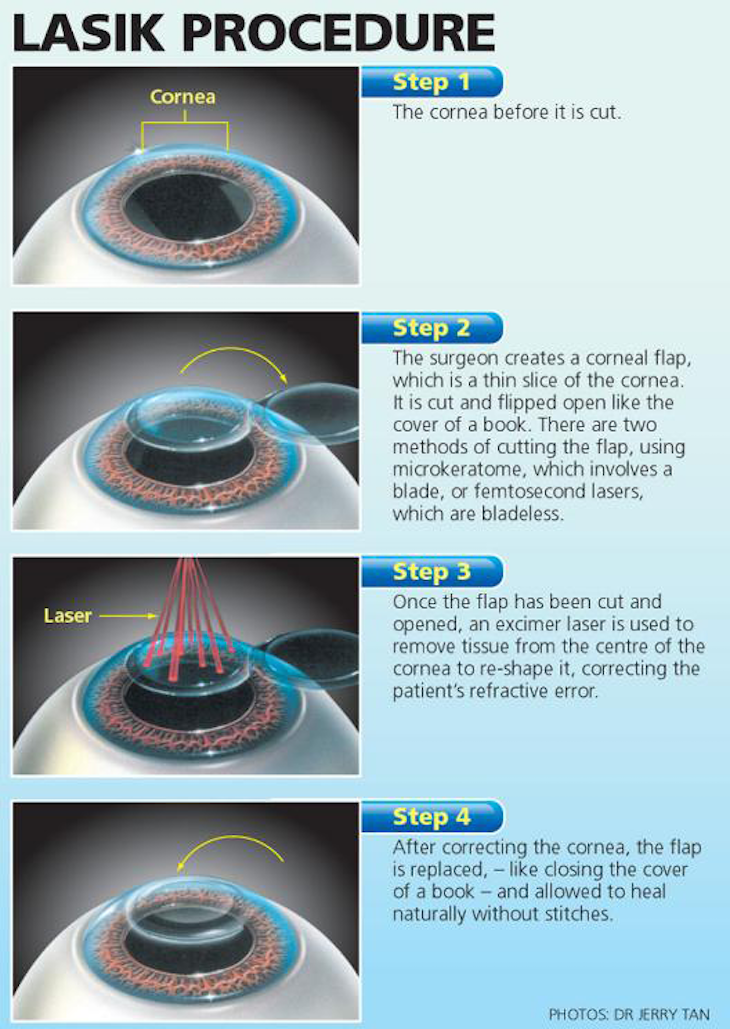LASIK eye surgery is one of the most popular types of vision correction procedures today. The term LASIK stands for laser in-situ keratomileusis, and it has been performed almost 20 million times in the United States alone.
Since 1995 LASIK eye surgery is also FDA approved. Many adults choose LASIK eye surgery to offer a solution for those who are tired of wearing contacts and glasses. Although it is not for everyone, LASIK effectively and safely treats astigmatism, nearsightedness, and farsightedness.
There are many important things you need to know about LASIK treatment before undergoing this laser refractive surgery. You can find much information online; we want to summarize to most important questions in this article.
1. How Does LASIK Surgery Work?

As with every laser vision correction, LASIK also works by reshaping the cornea, which is the transparent layer covering the eye’s front. The surgery makes it possible for the light traveling through to be properly focused onto the retina located in the back of the eye. The surgical procedure itself takes about 30 minutes. Once the eye is immobilized, a flap is created by cutting through the cornea’s outermost layer with the laser. The flap is then put back in place to serve as a natural “bandage” for better healing.
2. How Effective Is LASIK Treatment?
LASIK eye surgery is considered to be one of the most effective vision correction procedures. The vast majority of the patients state that they have their desired vision after LASIK, and the optional enhancement treatments can further increase the number. However, although the patients are generally satisfied with the surgery, many of them still have to wear glasses or contact lenses, at least occasionally.
3. What Are The Side Effects of LASIK?
It is completely normal for patients to experience some discomfort in the first 24 to 48 hours after LASIK eye surgery. Some rare side effects are most likely if a high degree of long- or short-sightedness is corrected. For example, dry eyes, blurry vision, seeing halos around images, and glare.
4. Is LASIK for everyone?
While long-sightedness and short-sightedness can be corrected with LASIK, it may not be suitable for people with severe dry eyes or certain corneal diseases. Also, good results are less certain with more severe nearsightedness.
5. Choose Your Surgeon
When choosing your doctor, make sure that he or she is a registered ophthalmologist and has additional specialist training in laser refractive surgery. You should look for an experienced surgeon and ask about complications they have had. You should also clarify beforehand whether your surgeon will take care of you after the surgery or you will be redirected to a non-physician.
6. Are There Any Risks?
LASIK has been performed since 1995 and is a very common procedure worldwide. In the United States only, over 11 million LASIK procedures had been performed as of 2011, and over 28 million have been performed worldwide. Most people recover very quickly, and they are back at work within a few days or a maximum of one week. Complications occur in less than 5% of cases. Make sure to talk through your specific case with your surgeon.
7. Is the surgery painful?
Before the eye surgery, the patients receive eye drops with a local anesthetic that numbs the eyes within a few seconds. Patients report no pain during the procedure; it is a quick and pain-free method usually done in under 30 minutes. There won’t be any sensation of the treatment, and the results can usually be seen in as little as 24 hours.
8. What is postoperative care like?
It is necessary to use antibiotic and anti-inflammatory eye drops for a couple of weeks following the surgery. It is also advised to rest the eyes as frequently as possible and wear eyeglasses to protect the eyes from bright light. Occasionally after the procedure, a bandage contact lens is placed to aid the healing and typically removed after 3–4 days. The first few hours directly after the surgery, it is normal to feel some burning, tearing, or discomfort.
9. How much does the surgery cost?

The average cost for Custom Bladeless LASIK treatment is around $2,000 per eye. This national average price can vary depending on location, surgeon’s experience. Since the treatment is considered an elective procedure for most people, most insurance companies do not cover laser eye surgery.
10. Are There Other Methods?
There are many different methods such as INTACS, LASEK, or PRK (the latter was the first type of laser eye surgery for vision correction and is the predecessor to the popular LASIK procedure), to mention a few. Experienced eye surgeons know these methods and will be able to advise which one is the most suitable for you.



